Recommended Books
Southeast Asia
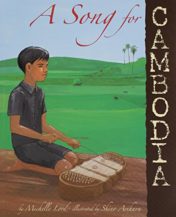
A Song For Cambodia
When Arn was a young boy in Cambodia, his days were filled with love, laughter, and the sweet sounds of music. That all changed suddenly in 1975 when Arn s village was invaded by Khmer Rouge soldiers and his family was torn apart. Nine-year-old Arn was taken to a children s work camp, where he labored long hours in the rice fields under the glaring eyes of threatening soldiers. Overworked, underfed, and in constant fear for his life, Arn had to find a way to survive. When guards asked for volunteers to play music one day, Arn bravely raised his hand taking a chance that would change the course of his life. A Song for Cambodia is the inspirational true story of Arn Chorn-Pond. His heartfelt music created beauty in a time of darkness and turned tragedy into healing.
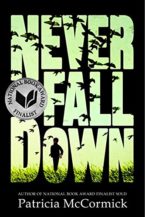
Never Fall Down: A Novel
This National Book Award nominee from two-time finalist Patricia McCormick is the unforgettable story of Arn Chorn-Pond, who defied the odds to survive the Cambodian genocide of 1975-1979 and the labor camps of the Khmer Rouge.
Based on the true story of Cambodian advocate Arn Chorn-Pond, and authentically told from his point of view as a young boy, this is an achingly raw and powerful historical novel about a child of war who becomes a man of peace. It includes an author’s note and acknowledgments from Arn Chorn-Pond himself.
When soldiers arrive in his hometown, Arn is just a normal little boy. But after the soldiers march the entire population into the countryside, his life is changed forever.
Arn is separated from his family and assigned to a labor camp: working in the rice paddies under a blazing sun, he sees the other children dying before his eyes. One day, the soldiers ask if any of the kids can play an instrument. Arn’s never played a note in his life, but he volunteers.
This decision will save his life, but it will pull him into the very center of what we know today as the Killing Fields. And just as the country is about to be liberated, Arn is handed a gun and forced to become a soldier.
Supports the Common Core State Standards.
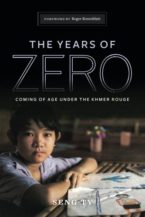
The Years of Zero: Coming of Age Under the Khmer Rouge
The Years of Zero—Coming of Age Under the Khmer Rouge is a survivor’s account of the Cambodian genocide carried out by Pol Pot’s sadistic and terrifying Khmer Rouge regime in the late 1970s. It follows the author, Seng Ty, from the age of seven as he is plucked from his comfortable, middle-class home in a Phnom Penh suburb, marched along a blistering, black strip of highway into the jungle, and thrust headlong into the unspeakable barbarities of an agricultural labor camp. Seng’s mother was worked to death while his siblings succumbed to starvation. His oldest brother was brought back from France and tortured in the secret prison of Tuol Sleng. His family’s only survivor and a mere child, Seng was forced to fend for himself, navigating the brainwashing campaigns and random depravities of the Khmer Rouge, determined to survive so he could bear witness to what happened in the camp. The Years of Zero guides the reader through the author’s long, desperate periods of harrowing darkness, each chapter a painting of cruelty, caprice, and courage. It follows Seng as he sneaks mice and other living food from the rice paddies where he labors, knowing that the penalty for such defiance is death. It tracks him as he tries to escape into the jungle, only to be dragged back to his camp and severely beaten. Through it all, Seng finds a way to remain whole both in body and in mind. He rallies past torture, betrayal, disease and despair, refusing at every juncture to surrender to the murderers who have stolen everything he had. As The Years of Zero concludes, the reader will have lived what Seng lived, risked what he risked, endured what he endured, and finally celebrate with him his unlikeliest of triumphs.
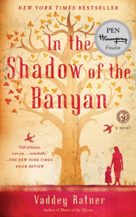
In the Shadow of the Banyan: A Novel
A beautiful celebration of the power of hope, this New York Times bestselling novel tells the story of a girl who comes of age during the Cambodian genocide.
You are about to read an extraordinary story, a PEN Hemingway Award finalist “rich with history, mythology, folklore, language and emotion.” It will take you to the very depths of despair and show you unspeakable horrors. It will reveal a gorgeously rich culture struggling to survive through a furtive bow, a hidden ankle bracelet, fragments of remembered poetry. It will ensure that the world never forgets the atrocities committed by the Khmer Rouge regime in the Cambodian killing fields between 1975 and 1979, when an estimated two million people lost their lives. It will give you hope, and it will confirm the power of storytelling to lift us up and help us not only survive but transcend suffering, cruelty, and loss.
For seven-year-old Raami, the shattering end of childhood begins with the footsteps of her father returning home in the early dawn hours, bringing details of the civil war that has overwhelmed the streets of Phnom Penh, Cambodia’s capital. Soon the family’s world of carefully guarded royal privilege is swept up in the chaos of revolution and forced exodus. Over the next four years, as the Khmer Rouge attempts to strip the population of every shred of individual identity, Raami clings to the only remaining vestige of her childhood—the mythical legends and poems told to her by her father. In a climate of systematic violence where memory is sickness and justification for execution, Raami fights for her improbable survival. Displaying the author’s extraordinary gift for language, In the Shadow of the Banyan is a brilliantly wrought tale of human resilience.
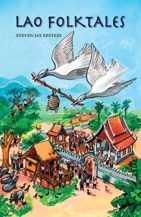
Lao Folktales
Here in one slim volume is a selection of the best-known and best-loved Lao folktales that have entertained the Lao people for generations. We meet the legendary trickster Xieng Mieng who matches his wits with merchants, monks, and kings. We find a quick-witted toad that terrifies tigers, a turtle that flies, a cadre of snails that race a rabbit, and a mynah bird that speaks five languages fluently.
The reader may recognize a whisper of Aesop or a Jataka tale, but each story is distinctively Lao, retold with Lao humor and charm reflecting a Buddhist culture in a Marxist state. Works by Anoulom Souvandouane, the foremost illustrator in Laos, enliven the stories.
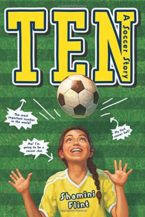
Ten: A Soccer Story
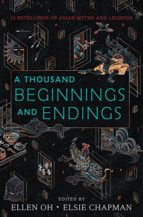
A Thousand Beginnings and Endings
Star-crossed lovers, meddling immortals, feigned identities, battles of wits, and dire warnings: these are the stuff of fairy tale, myth, and folklore that have drawn us in for centuries.
Sixteen bestselling and acclaimed authors reimagine the folklore and mythology of East and South Asia in short stories that are by turns enchanting, heartbreaking, romantic, and passionate.
Compiled by We Need Diverse Books’s Ellen Oh and Elsie Chapman—who both contributed stories to this edition, as well—the authors included in this exquisite collection are: Renée Ahdieh, Sona Charaipotra, Preeti Chhibber, Roshani Chokshi, Aliette de Bodard, Melissa de la Cruz, Julie Kagawa, Rahul Kanakia, Lori M. Lee, E. C. Myers, Cindy Pon, Aisha Saeed, Shveta Thakrar, and Alyssa Wong.
A mountain loses her heart. Two sisters transform into birds to escape captivity. A young man learns the true meaning of sacrifice. A young woman takes up her mother’s mantle and leads the dead to their final resting place.
From fantasy to science fiction to contemporary, from romance to tales of revenge, these stories will beguile readers from start to finish. For fans of Neil Gaiman’s Unnatural Creatures and Ameriie’s New York Times–bestselling Because You Love to Hate Me.
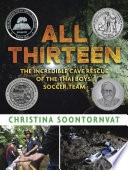
All Thirteen: The Incredible Cave Rescue of the Thai Boys’ Soccer Team
“On June 23, 2018, twelve young players of the Wild Boars soccer team and their coach enter a cave in northern Thailand seeking an afternoon’s adventure. But when they turn to leave, rising floodwaters block their path out. The boys are trapped! Before long, news of the missing team spreads, launching a seventeen-day rescue operation involving thousands of rescuers from around the globe. Combining firsthand interviews of rescue workers with in-depth science and details of the region’s culture and religion, [the author]…masterfully shows how both the complex engineering operation above ground and the mental struggles of the thirteen young people below proved critical in the life-or-death mission.”–
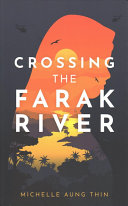
Crossing the Farak River
Fourteen-year-old Hasina is forced to flee everything she knows in this gripping account of the refugee crisis in Myanmar. For Hasina and her younger brother Araf, the constant threat of Sit Tat, the Myanmar Army, is a way of life in Rakhine province–just uttering the name is enough to send chills down their spines. As Rohingyas, they know that when they hear the wop wop wop of their helicopters there is one thing to do–run, and don’t stop. So when soldiers invade their village one night, and Hasina awakes to her aunt’s fearful voice, followed by smoke, and then a scream, run is what they do. Hasina races deep into the Rakhine forest to hide with her cousin Ghadiya and Araf. When they emerge some days later, it is to a smouldering village. Their house is standing but where is the rest of her family? With so many Rohingyas driven out, Hasina must figure out who she can trust for help and summon the courage to fight for her family amid the escalating conflict that threatens her world and her identity. Fast-paced and accessibly written, Hasina tackles an important topic frequently in the news but little explored in fiction. It is a poignant and thought-provoking introduction for young readers to the miliatry crackdown and ongoing persecution of Rohingya people, from the perspective of a brave and resilient protagonist.
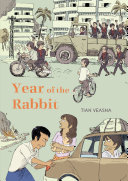
Year of the Rabbit
One family’s quest to survive the devastation of the Khmer Rouge Year of the Rabbit tells the true story of one family’s desperate struggle to survive the murderous reign of the Khmer Rouge in Cambodia. In 1975, the Khmer Rouge seized power in the capital city of Phnom Penh. Immediately after declaring victory in the war, they set about evacuating the country’s major cities with the brutal ruthlessness and disregard for humanity that characterized the regime ultimately responsible for the deaths of one million citizens. Cartoonist Tian Veasna was born just three days after the Khmer Rouge takeover, as his family set forth on the chaotic mass exodus from Phnom Penh. Year of the Rabbit is based on firsthand accounts, all told from the perspective of his parents and other close relatives. Stripped of any money or material possessions, Veasna’s family found themselves exiled to the barren countryside along with thousands of others, where food was scarce and brutal violence a constant threat. Year of the Rabbit shows the reality of life in the work camps, where Veasna’s family bartered for goods, where children were instructed to spy on their parents, and where reading was proof positive of being a class traitor. Constantly on the edge of annihilation, they realized there was only one choice—they had to escape Cambodia and become refugees. Veasna has created a harrowing, deeply personal account of one of the twentieth century’s greatest tragedies.
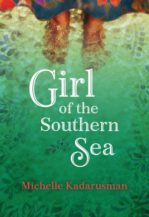
Girl of the Southern Sea
From the time she was a little girl, Nia has dreamed up adventures about the Javanese mythical princess, Dewi Kadita. Now fourteen, Nia would love nothing more than to continue her education and become a writer. But high school costs too much. Her father sells banana fritters at the train station, but too much of his earnings go toward his drinking habit. Too often Nia is left alone to take over the food cart as well as care for her brother and their home in the Jakarta slums.
But Nia is determined to find a way to earn her school fees. After she survives a minibus accident unharmed and the locals say she is blessed with ‘good luck magic,’ Nia exploits the notion for all its worth by charging double for her fried bananas. Selling superstitions can be dangerous, and when the tide turns it becomes clear that Nia’s future is being mapped without her consent.
If Nia is to write a new story for herself, she must overcome more obstacles than she could ever have conceived of for her mythical princess, and summon courage she isn’t sure she has.

The Weight of Our Sky
A music loving teen with OCD does everything she can to find her way back to her mother during the historic race riots in 1969 Kuala Lumpur, Malaysia, in this heart-pounding literary debut.
Melati Ahmad looks like your typical movie-going, Beatles-obsessed sixteen-year-old. Unlike most other sixteen-year-olds though, Mel also believes that she harbors a djinninside her, one who threatens her with horrific images of her mother’s death unless she adheres to an elaborate ritual of counting and tapping to keep him satisfied.
A trip to the movies after school turns into a nightmare when the city erupts into violent race riots between the Chinese and the Malay. When gangsters come into the theater and hold movie-goers hostage, Mel, a Malay, is saved by a Chinese woman, but has to leave her best friend behind to die.
On their journey through town, Mel sees for herself the devastation caused by the riots. In her village, a neighbor tells her that her mother, a nurse, was called in to help with the many bodies piling up at the hospital. Mel must survive on her own, with the help of a few kind strangers, until she finds her mother. But the djinn in her mind threatens her ability to cope.
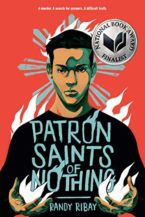
Patron Saints of Nothing
A powerful coming-of-age story about grief, guilt, and the risks a Filipino-American teenager takes to uncover the truth about his cousin’s murder.
Jay Reguero plans to spend the last semester of his senior year playing video games before heading to the University of Michigan in the fall. But when he discovers that his Filipino cousin Jun was murdered as part of President Duterte’s war on drugs, and no one in the family wants to talk about what happened, Jay travels to the Philippines to find out the real story.
Hoping to uncover more about Jun and the events that led to his death, Jay is forced to reckon with the many sides of his cousin before he can face the whole horrible truth — and the part he played in it.
As gripping as it is lyrical, Patron Saints of Nothing is a page-turning portrayal of the struggle to reconcile faith, family, and immigrant identity.
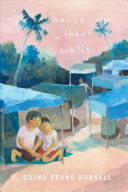
House Without Walls
For most people, home is a place with four walls. It’s a place to eat, sleep, rest, and live. For a refugee, the concept of home is ever-changing, ever-moving, ever-wavering. And often, it doesn’t have any walls at all. Eleven-year-old Lam escapes from Vietnam with Dee Dee during the Vietnamese Boat People Exodus in 1979, when people from Vietnam, Laos, and Cambodia fled their homelands for safety. For a refugee, the trip is a long and perilous one, filled with dangerous encounters with pirates and greedy sailors, a lack of food and water, and even the stench of a dead body onboard. When they finally arrive at a refugee camp, Lam befriends Dao, a girl her age who becomes like a sister-a welcome glimmer of happiness after a terrifying journey. Readers will feel as close to Lam as the jade pendant she wears around her neck, sticking by her side throughout her journey as she experiences fear, crushing loss, boredom, and some small moments of joy along the way. Written in verse, this is a heartfelt story that is sure to build empathy and compassion for refugees around the world escaping oppression.
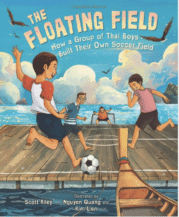
The Floating Field
How a group of Thai boys built their own soccer field.
But on the island of Koh Panyee, in a village built on stilts, there is no open space. The boys can play only twice a month on a sandbar when the tide is low enough. Everything changes when the teens join together to build their very own floating soccer field.
This inspiring true story by debut author Scott Riley is gorgeously illustrated by Nguyen Quang and Kim Lien. Perfect for fans of stories about sports, beating seemingly impossible odds, and places and cultures not often shown in picture books.
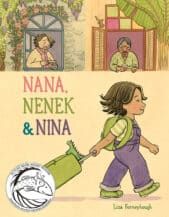
Nana, Nenek & Nina
Nina loves visiting her two faraway grandmas—one in Malaysia and one in England. Spot the similarities and differences between their homes in this cozy and beautifully illustrated picture book!
Nina lives in San Francisco with her parents, and she loves visiting her two grandmas across the world. Follow Nina as her two trips unfold side by side: Young readers will love poring over the details of what is the same and what is different at Nana’s home in England and at Nenek’s home in Malaysia. In each place, Nina wears different clothes, plays different games, and eats different food. But so much about visiting Nana and Nenek is the same, from warm hugs at the airport to beach days and bedtime snuggles. Nina is equally at home across the world in Malaysia or England, and both of her grandmas love her to California and back.
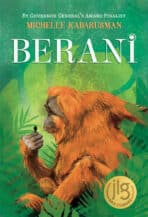
Berani
An honest and stirring novel about the choices made by young environmental activists, and the balancing act between consequence and triumph.
Malia has had a privileged upbringing in Indonesia, but since her Indonesian father died, her Canadian mother wants to return to her own family on the other side of the world. Malia is determined to stay. Indonesia is her home, and she loves it. Besides, if she leaves, how can she continue to fight for her country’s precious rainforests?
Ari knows he is lucky to be going to school and competing on the chess team, even if it means an endless round of chores at his uncle’s restaurant. Back in his home village, he and his cousin Suni dreamed about getting a chance like this. But now he is here without her, and the guilt is crushing him. As if that weren’t enough, he’s horribly worried about Ginger Juice, his uncle’s orangutan. The too-small cage where she lives is clearly hurting her body and her mind, but where else can she go? The rainforest where she was born is a palm oil plantation now.
